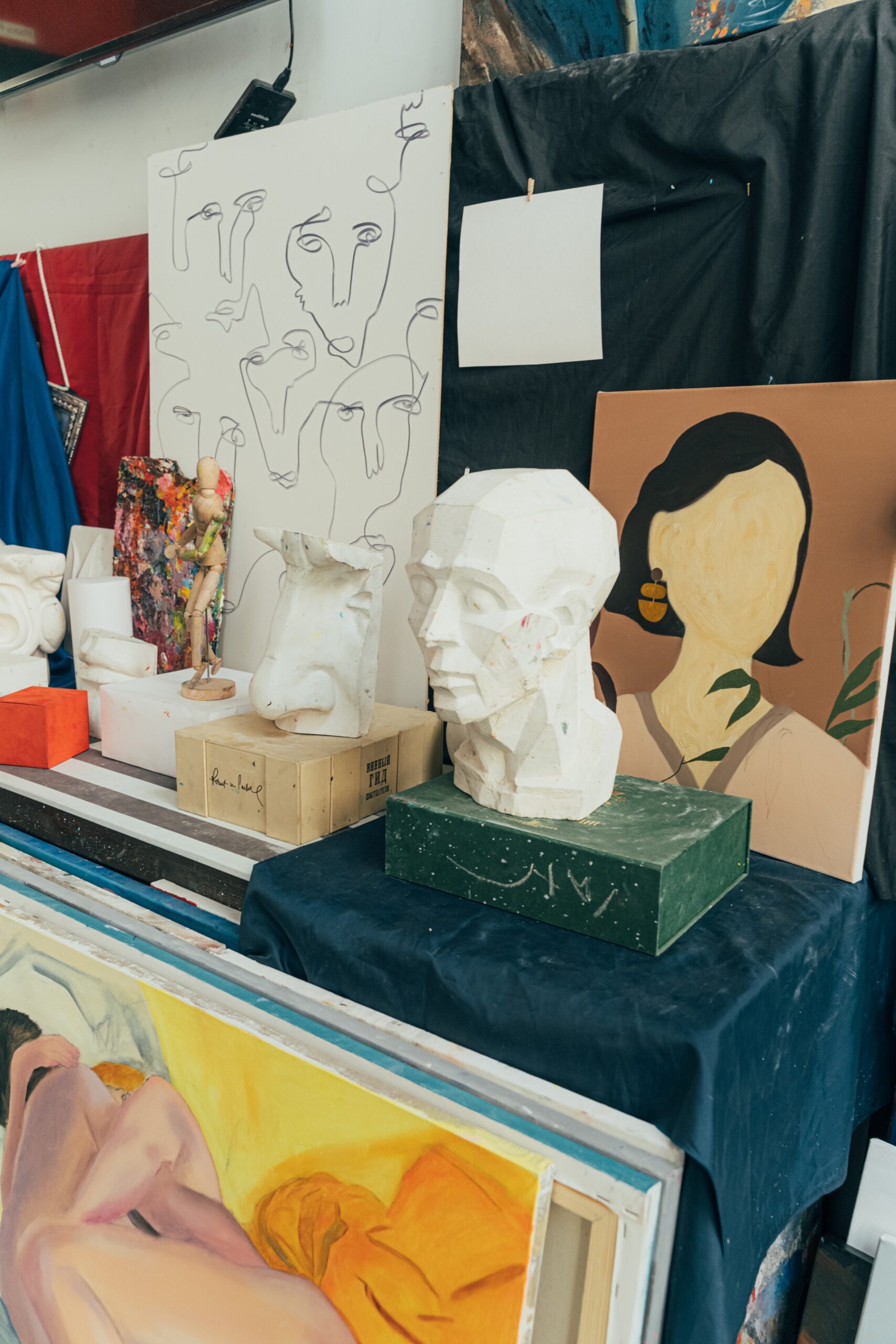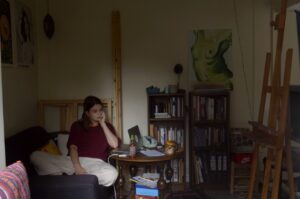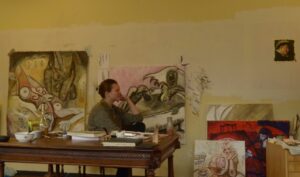
Why art studios are indispensable for young artists
The lack of studios for artists is almost as bad as the housing crisis in Groningen. Why is working in an art studio so important? Pan and Milica share their thoughts about this with Montserrat.
After graduation, most students get a job at some firm or organization that offers them a workspace. Most artists however, don’t have such jobs. For them, work means going to their art studios.
‘I used to spend the majority of the day in the studio,’ says Milica Janković, reminiscing of the time she had the opportunity to use a studio at school. ‘I woke up, had coffee and breakfast. After that, I went to the studio, had a second coffee, and stayed there for as long as possible. It was like a 9 to 5 job, but cooler. When I had some company, it was really nice. We took a break together and talked to each other. Working in a studio really differs from doing everything in your room.’

Art Academy Minerva urges its students to use its studios as much as possible, especially in their final year, when students are given big studio spaces. But these facilities are just for students. After graduation, former students are supposed to find working space elsewhere.
It’s a struggle, takes a toll on motivation and causes stress
Some students are unlucky. They are forced to start the dreadful task of finding a new place to work or modifying their work. Naturally, it’s a case-by-case situation. But as young adults being mercilessly propelled into the rapturing art world, it’s certainly easier to navigate this world when having a workspace. However, actually using a studio in Groningen can be a long and tiring process, full of waiting lists and uncertainty. Most of the time, it’s a matter of luck and contacts. If students lack these, it’s easy to get depressed and unmotivated.
This space is not set up for focusing on art, in my room, I just kind of want to sleep
‘I paint with oil,’ Milica says, ‘I need to use things like turpentine that are very toxic, especially in small spaces. I can’t really do that in my room without poisoning myself.’
Another disadvantage of working at home is the fact that you get easily distracted. ‘You are not only thinking about the art,’ Milica says from her own experience, ‘you tend to think about everything. This space is not set up for focusing and thinking about art. In my room, I just kind of want to sleep. When I use it as a workspace, everything becomes much more loaded. For me, everything has to be good instead of experimental.’
Without having a separate designated studio space, it’s hard to delimit my practice and to think about it professionally
For Milica, painting with oils makes it harder to work than for someone who uses film or photography, like I do. Since last March, I have been lucky enough to live in a big house where I can work. My art practice is easier to adapt to different areas. Nevertheless, without having a separate designated studio space, it’s hard to delimit my practice and to think about it professionally. Being in the studio can help me have a sense of doing something, heading in a particular direction.
It sets certain boundaries and helps maintain a rhythm when you are not studying or getting specific projects. I think the same applies for artists who consider the world or their laptop to be their studio: I believe that art studios can be a good place to think. In the same way that people prefer to work in cafes or study at the library instead of at home.

‘I am kind of a nomad of studios. My work requires a studio, but only in the long term,’ interrupts Pan Vanitcharoenthum, who is listening in from the other side of the room. ‘When I am actually going to have projects, I would love to have a space to store materials, but right now, most of the work I am doing is online. I guess I jump from studio to studio, to hang out with friends but also just to sit down and work with them.
‘The studio as a social space is one of its important aspects, but I also know that even if people don’t socialize with me, I still work better than sitting at home. Something about being close to bed… I just want to lay down.’
We agree that being close to bed is not good for productivity and in student rooms, there just isn’t enough space to avoid it.
A studio is an atemporal bubble that exists outside of reality
This designated space that separates me from real life allows me to think on that so called real life from an outsider’s perspective. It’s easier to reflect on something by distancing myself from it. Coming up with ideas can be a challenging task that needs time and continuity. Sometimes, even when I’m not feeling the least bit inspired, I’d go to the studio and just… exist. Eventually, I’d think of something.